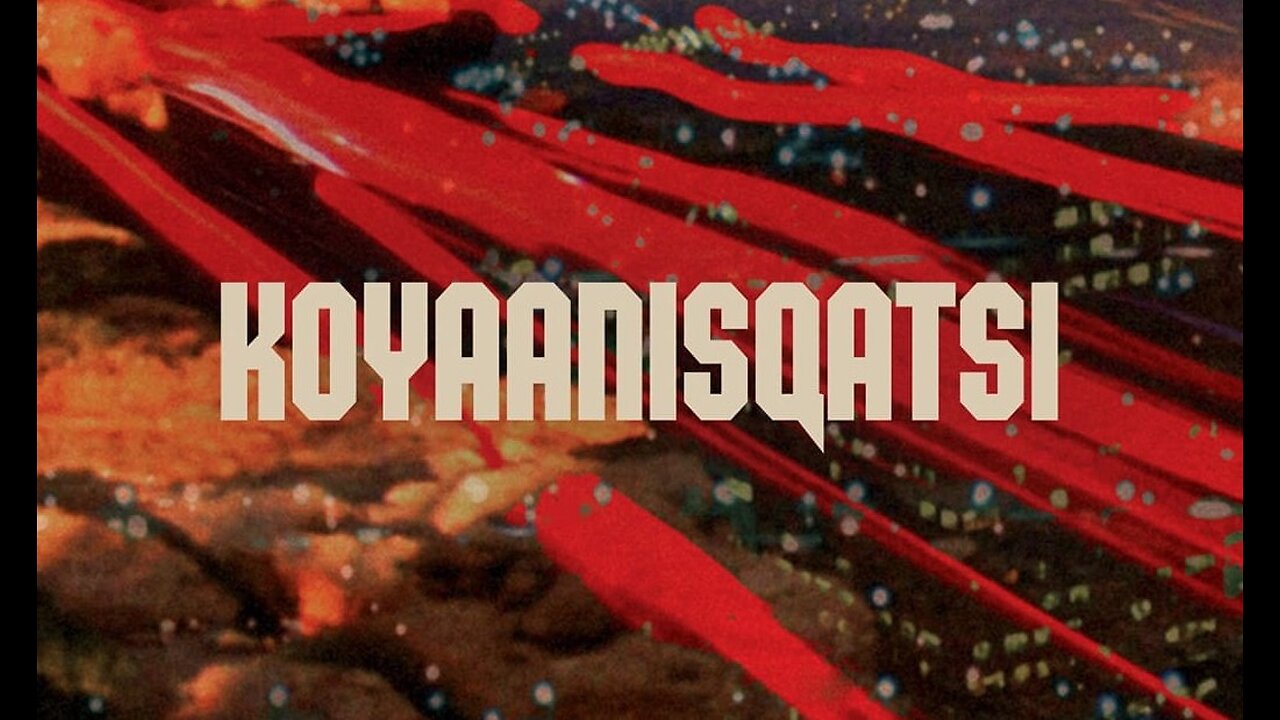Premium Only Content

Koyaanisqatsi (1982)
"Koyaanisqatsi" is an experimental film directed by Godfrey Reggio that presents a striking visual journey exploring the relationship between nature, humanity, and technology. The film is unique in its approach, featuring no dialogue or narration, and instead relies on a mesmerizing montage of images accompanied by an evocative score composed by Philip Glass. The title, derived from the Hopi language, translates to "life out of balance," setting the thematic tone for the film's exploration of modern existence.
The film opens with images of ancient cave paintings and transitions through a series of carefully composed shots showcasing pristine landscapes, cloud formations, and natural phenomena. As the visual narrative progresses, it shifts to depict human intervention in nature, including scenes of surface mining, hydroelectric dams, and urban development. The pace of the film accelerates, capturing the frenetic energy of city life, mass production, and technological advancement.
Through the expert use of time-lapse and slow-motion photography, Reggio draws parallels between natural processes and human-made systems. The film juxtaposes clouds racing across the sky with the flow of traffic, and the rhythmic movement of assembly lines with the patterns of ocean waves. This technique highlights the interconnectedness of all things while emphasizing the growing disconnect between humanity and the natural world.
Structured in sequences that escalate in intensity, "Koyaanisqatsi" builds a powerful commentary on modern existence. From serene wilderness to chaotic cityscapes, and from massive industrial complexes to intimate portraits of individuals, the film presents a wide-ranging visual poem. It culminates with images of space exploration and returns to the symbolism of ancient prophecies, coming full circle and leaving the interpretation of its powerful imagery open to contemplation. Without traditional narration, the film uses the universal language of visuals and music to convey its profound message about the complexities of life in the technological age.
-
 42:43
42:43
22 Lions Films
6 months agoChronos (1985)
149 -
 LIVE
LIVE
The Rubin Report
1 hour agoRemembering Charlie Kirk & 9/11
1,544 watching -
 LIVE
LIVE
RealAmericasVoice
3 days agoHOME OF REAL NEWS
11,130 watching -
 LIVE
LIVE
Benny Johnson
1 hour agoAmerican Martyr: Remembering Charlie Kirk | FBI Reveals New Footage of Assassin, Trump's Eulogy LIVE
9,100 watching -
 1:00:32
1:00:32
VINCE
2 hours agoRest In Peace Charlie Kirk | Episode 123 - 09/11/25
101K112 -
 LIVE
LIVE
LFA TV
5 hours agoLFA TV ALL DAY STREAM - THURSDAY 9/11/25
5,730 watching -
 LIVE
LIVE
Bannons War Room
6 months agoWarRoom Live
17,146 watching -
 UPCOMING
UPCOMING
The Shannon Joy Show
19 minutes agoA message of encouragement and a call for faith and unity after the tragic killing of Charlie Kirk
-
 LIVE
LIVE
The Big Mig™
1 hour agoIn Honor Of Charlie Kirk, Rest In Peace 🙏🏻
2,450 watching -
 1:36:35
1:36:35
The White House
2 hours agoPresident Trump and the First Lady Attend a September 11th Observance Event
52.9K14